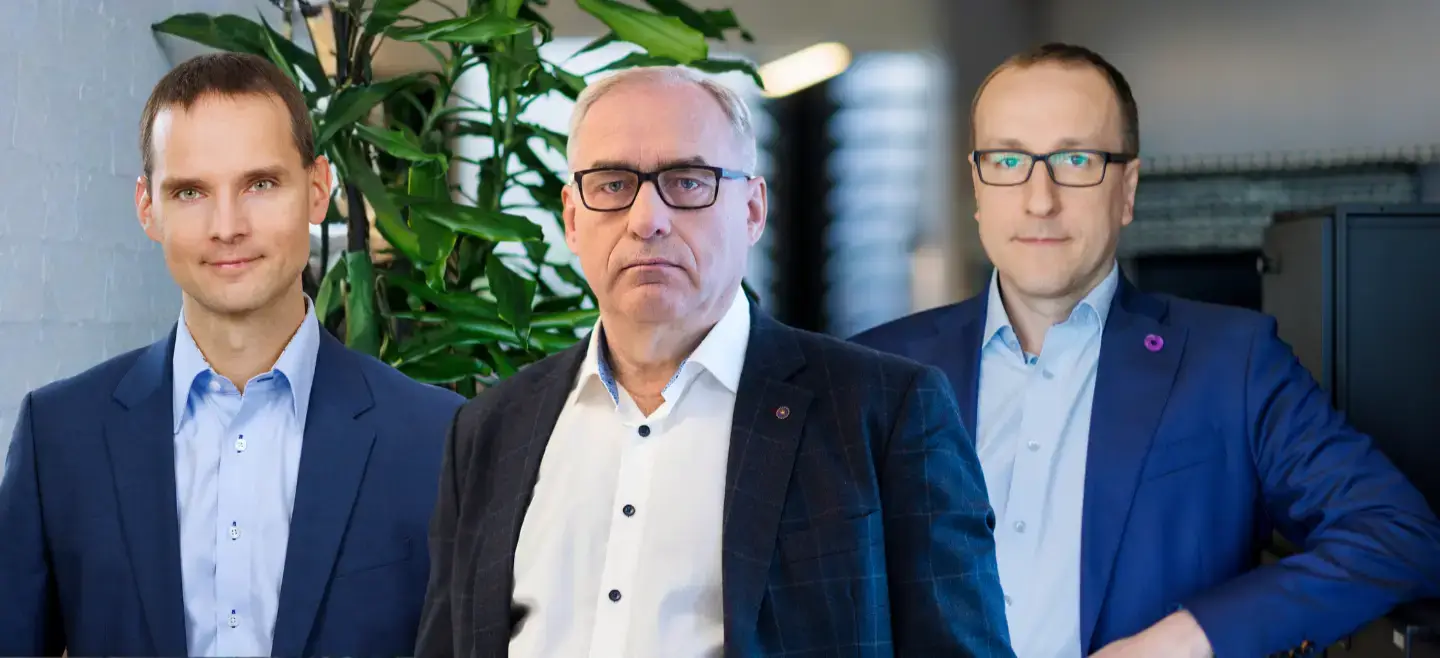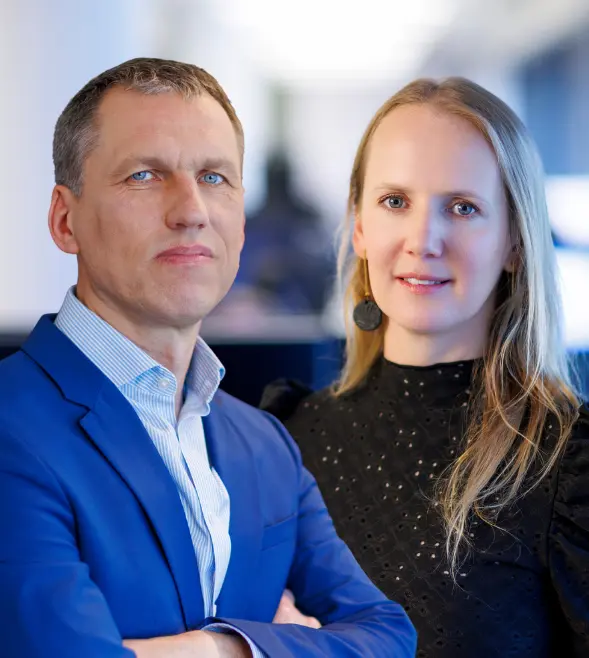If you have similar challenges and questions, please contact our specialists.

It’s often said that the only constant is change. The team at Grant Thornton Baltic knows this well – the work of accountants, auditors, and advisors is continuously evolving due to technological progress and ever-stricter regulatory requirements. But how can leaders manage change so that it truly bears fruit?
According to Tarmo Rahkama, Partner and Head of Audit at Grant Thornton Baltic, the key words in change management are communication and presence.
“A leader must convey the meaning behind the change – why we are doing something and what purpose it serves. Once people understand that, they are ready to engage,” he explains.
Tarmo emphasizes that change always comes with emotions and resistance. That’s why leaders must be there for their people – to listen, explain, and adjust goals if necessary.
“It takes courage to admit when the original plan needs to change. The leader’s role is to keep the focus on the goal,” he adds.
It all starts with selling the idea
Managing Partner Mati Nõmmiste believes that the most challenging part of implementing change is selling the idea.
“The first thing people ask is: why can’t we just keep doing things the way we always have? Explaining the reason for change and discussing it openly is hard work, but it’s unavoidable. At the same time, it’s important to remember that you’ll never get everyone on board – that has never happened and likely never will,” he says.
If the idea still doesn’t sell, Mati believes the leader must look in the mirror and ask whether the change is even necessary.
One successful example of change that Mati recalls is the adoption of Scoro CRM software about ten years ago. Previously, audit projects were managed in Excel and various databases, which made it impossible to see the big picture. The new system brought all key company data – from workflow and project management to accounting, sales, and reporting – together in one place.
“As CEO, I took the initiative in implementing Scoro because the leader must champion the change. If the leader doesn’t believe, the team won’t either,” Mati notes.
The leader explains, guides – and listens
Tarmo confirms that open communication is the key to success in any change process.
“There are always nuances and situations that no one foresaw at the beginning. Open information exchange and the willingness to adjust goals and actions along the way ensure that everyone understands what they’re working toward. A leader must coordinate firmly! You can’t just set the ball rolling and expect it to move on its own.”
Naturally, people management skills are critical in driving change. Mati recalls that when the number of employees at Grant Thornton Baltic grew into the hundreds, leadership development became a key focus area.
“Considering the labour market and our business needs, having professional people with the right values is the most important success factor. If we didn’t invest in leadership development and employer branding, we would lose good people,” he explains.
New managers are offered participation in a young leaders’ development program, and there is also a Grant Thornton Baltic Leaders’ Club, where experiences are shared.
“We learn from each other and discuss how we would act in similar situations. It helps build a unified leadership culture,” says Tarmo.
Employees expect clarity and support
Audit Manager Teet Haak highlights that as an employee, he expects clear strategy, training opportunities, support, and a human approach from leaders. “When the purpose of change is clear, and communication is timely and sufficient, it’s much easier for employees to go along with it,” he says.
According to Teet, change management at Grant Thornton Baltic is transparent and inclusive. “Leaders are present in the process, organize the necessary training, identify bottlenecks, and are open to feedback.” He adds that in recent years, auditors’ work has been influenced by goals to make audits both more efficient and higher in quality. “New technologies serve the first goal, and stricter regulations the second. My own work has been affected by new software tools and the integration of artificial intelligence into the audit process. Planning and conducting engagements has become more time-intensive and requires processing and documenting far more information than before. Since auditors essentially sell their time, this creates pressure for efficiency,” Teet explains.
One of the most significant recent changes in the firm was the implementation of new audit software at the end of 2023 and beginning of 2024. “There was no transition period – everyone had to adopt the new system at once. Training was short and intense. The initial rollout was led by a small team that included both partners and employees, who then trained the rest of the department. Looking back, the sudden and complete transition was the right move – it unified our focus, motivated us, created enthusiasm, and sparked healthy discussions,” Teet recalls.
He adds that fast and extensive change is possible when it’s well managed and when the sense of achievement is shared.
Employee expectations are changing too
Change doesn’t only come from the employer’s initiative – employers themselves must also be ready to change, as employees’ expectations for work environment, content, and tools have evolved dramatically over the past decade.
“For example, people no longer want to be in the office from nine to five. Some are morning people and prefer to start early and finish in the afternoon – and that’s fine. For hybrid work to succeed, communication, information sharing, and planning are crucial. It can be challenging for employers, but it’s necessary to keep good specialists motivated,” says Tarmo.
Teet adds that he expects transparent leadership, flexibility (including opportunities for remote work), and greater attention to employee wellbeing.
“Flexible working arrangements require trust from the employer – and it’s my responsibility not to betray that trust,” he says.
He also values development opportunities and team spirit:
“I want to grow not only professionally but also personally. It’s important to belong to a supportive team, and that depends on the organization’s structure and culture that the employer builds and maintains.”
Change is driven by people, not technology
The reflections of Mati, Tarmo, and Teet reveal a simple but vital truth: change is not driven by technology, but by people.
A leader sets the direction, creates a sense of security, and helps people understand the purpose behind the change. Employees, in turn, bring change to life – when the team is engaged and understands the goal, change becomes an opportunity, not an obstacle.








